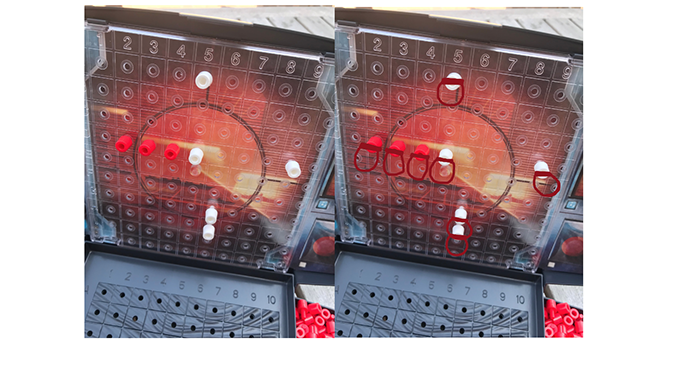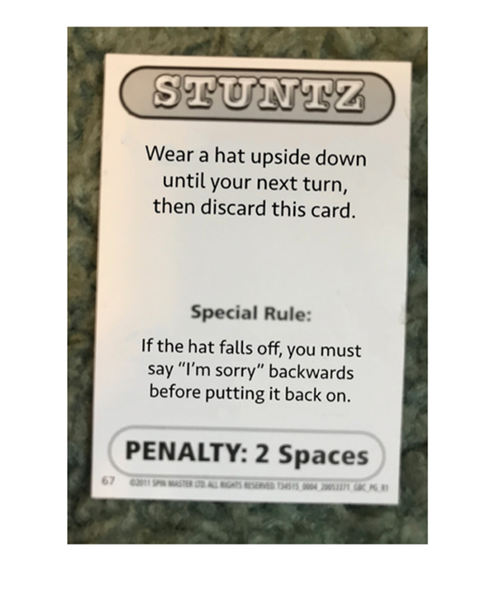Battleship
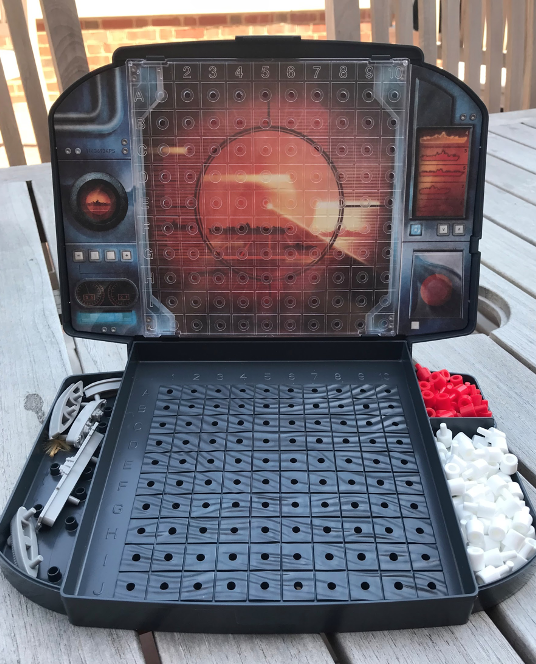
Battleship tasks players with hunting down the opponent's ships via firing shots and narrowing down where the ships could be. The large number of plastic pieces and precise control needed to place them on the board made for a number of dexterity issues as noted by this student.
Trouble
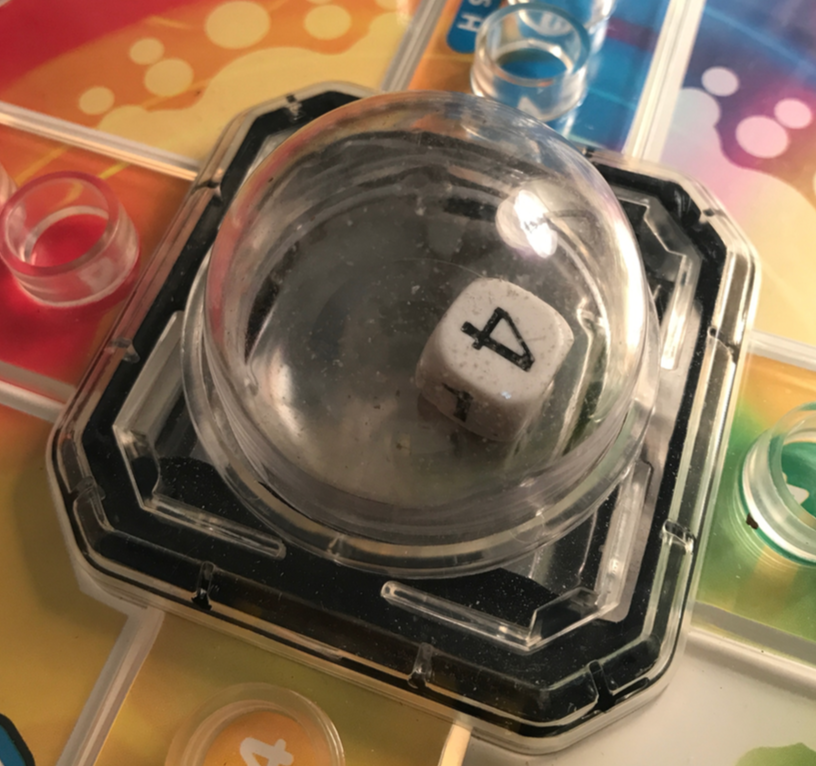
Trouble involves popping the plastic dice roller in the middle of the board and then moving your pieces around the board in a race to the end. As the board area and pieces are only distinguishable from other players' via color, this student looked for ways to make elements look and feel differently.
Quelf

Party games like Quelf are one of the most common to see gameplay based around physical challenges such as balance and other bodily movements. This student looked for ways to make the game less physical, while also increasing the tactile-ness of game pieces to meet a range of bodily ability.
Connect Four
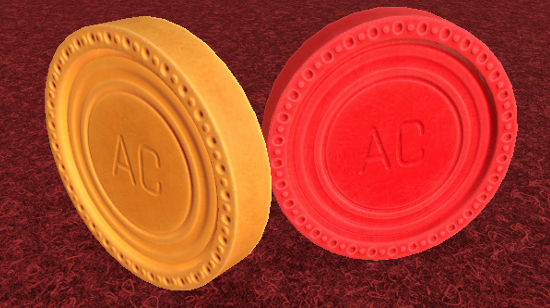
Some students studied fairly simple games such as Connect Four, but were still able to highlight numerous ways the game could be more accessible. Like Trouble and Battleship, Connect Four relies on precisely maneuvering plastic game pieces in order to play.
 Lens: Visual
Lens: Visual
